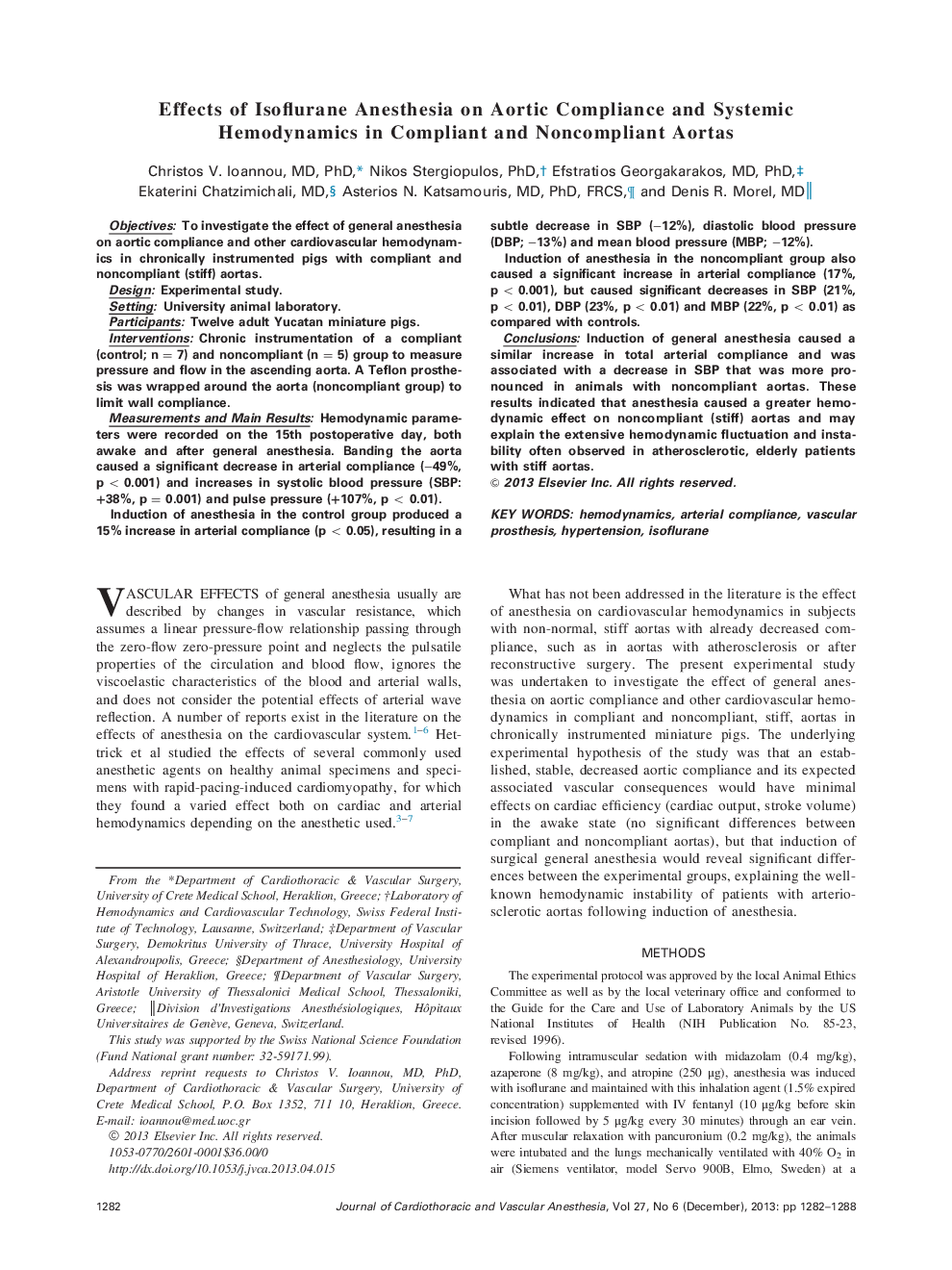| Article ID | Journal | Published Year | Pages | File Type |
|---|---|---|---|---|
| 2759560 | Journal of Cardiothoracic and Vascular Anesthesia | 2013 | 7 Pages |
ObjectivesTo investigate the effect of general anesthesia on aortic compliance and other cardiovascular hemodynamics in chronically instrumented pigs with compliant and noncompliant (stiff) aortas.DesignExperimental study.SettingUniversity animal laboratory.ParticipantsTwelve adult Yucatan miniature pigs.InterventionsChronic instrumentation of a compliant (control; n = 7) and noncompliant (n = 5) group to measure pressure and flow in the ascending aorta. A Teflon prosthesis was wrapped around the aorta (noncompliant group) to limit wall compliance.Measurements and Main ResultsHemodynamic parameters were recorded on the 15th postoperative day, both awake and after general anesthesia. Banding the aorta caused a significant decrease in arterial compliance (−49%, p<0.001) and increases in systolic blood pressure (SBP: +38%, p = 0.001) and pulse pressure (+107%, p< 0.01).Induction of anesthesia in the control group produced a 15% increase in arterial compliance (p<0.05), resulting in a subtle decrease in SBP (−12%), diastolic blood pressure (DBP; −13%) and mean blood pressure (MBP; −12%).Induction of anesthesia in the noncompliant group also caused a significant increase in arterial compliance (17%, p<0.001), but caused significant decreases in SBP (21%, p<0.01), DBP (23%, p<0.01) and MBP (22%, p<0.01) as compared with controls.ConclusionsInduction of general anesthesia caused a similar increase in total arterial compliance and was associated with a decrease in SBP that was more pronounced in animals with noncompliant aortas. These results indicated that anesthesia caused a greater hemodynamic effect on noncompliant (stiff) aortas and may explain the extensive hemodynamic fluctuation and instability often observed in atherosclerotic, elderly patients with stiff aortas.
